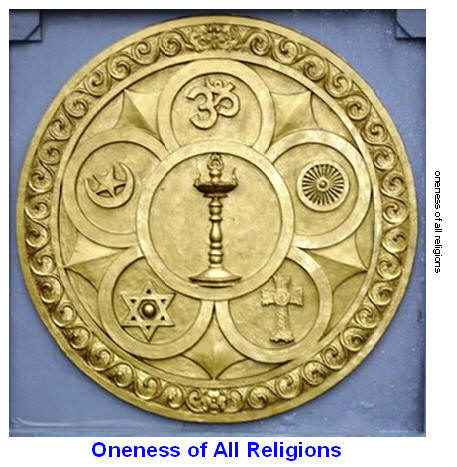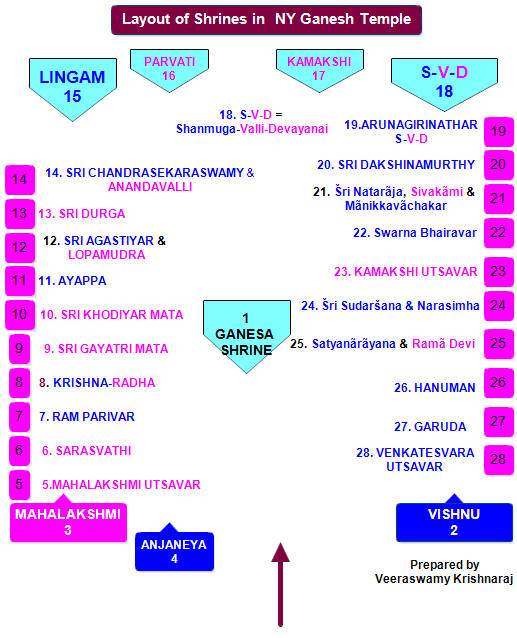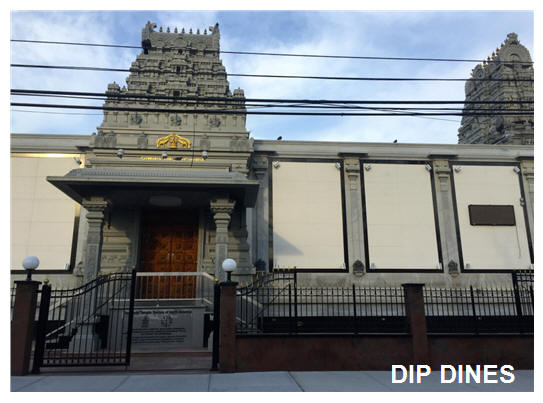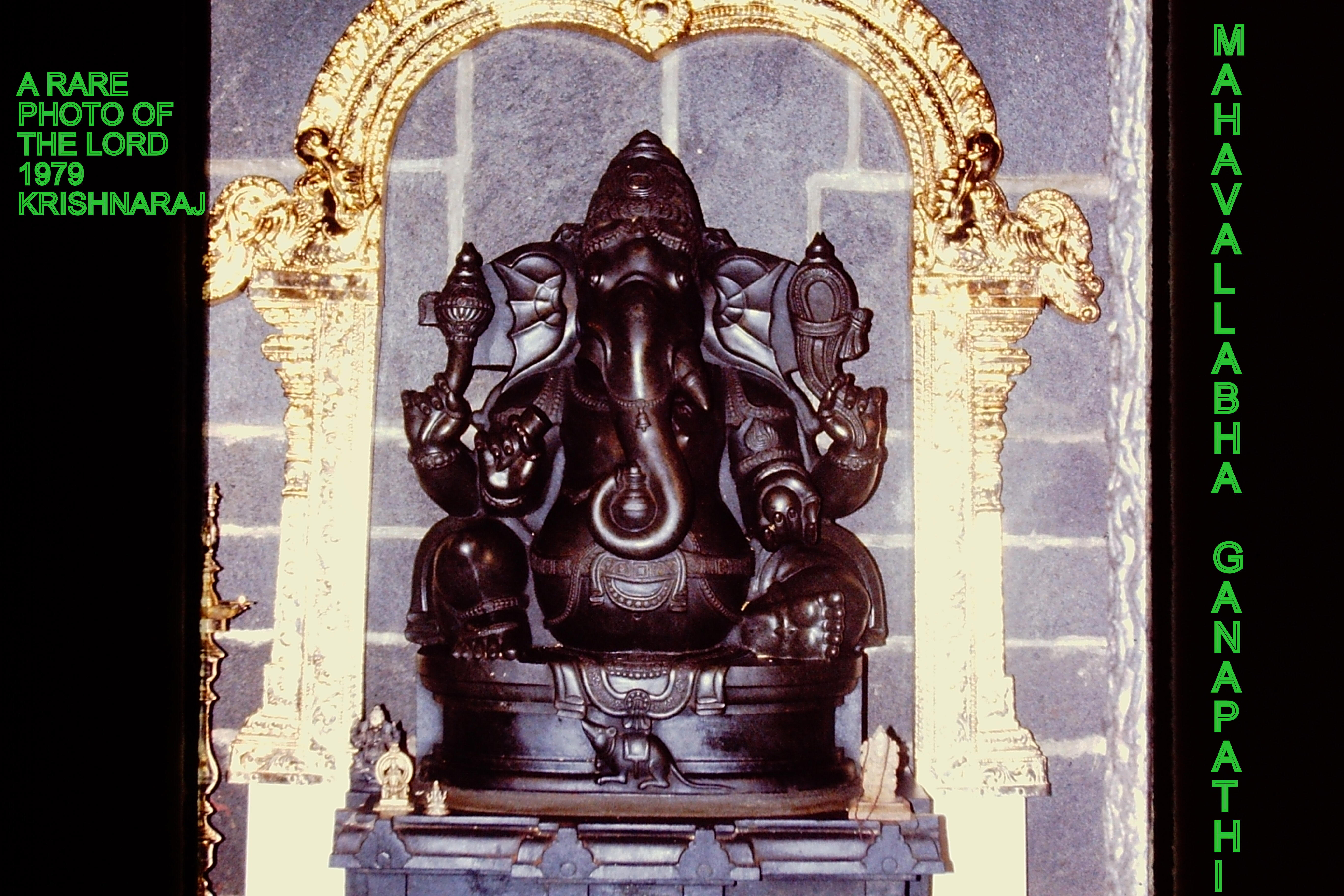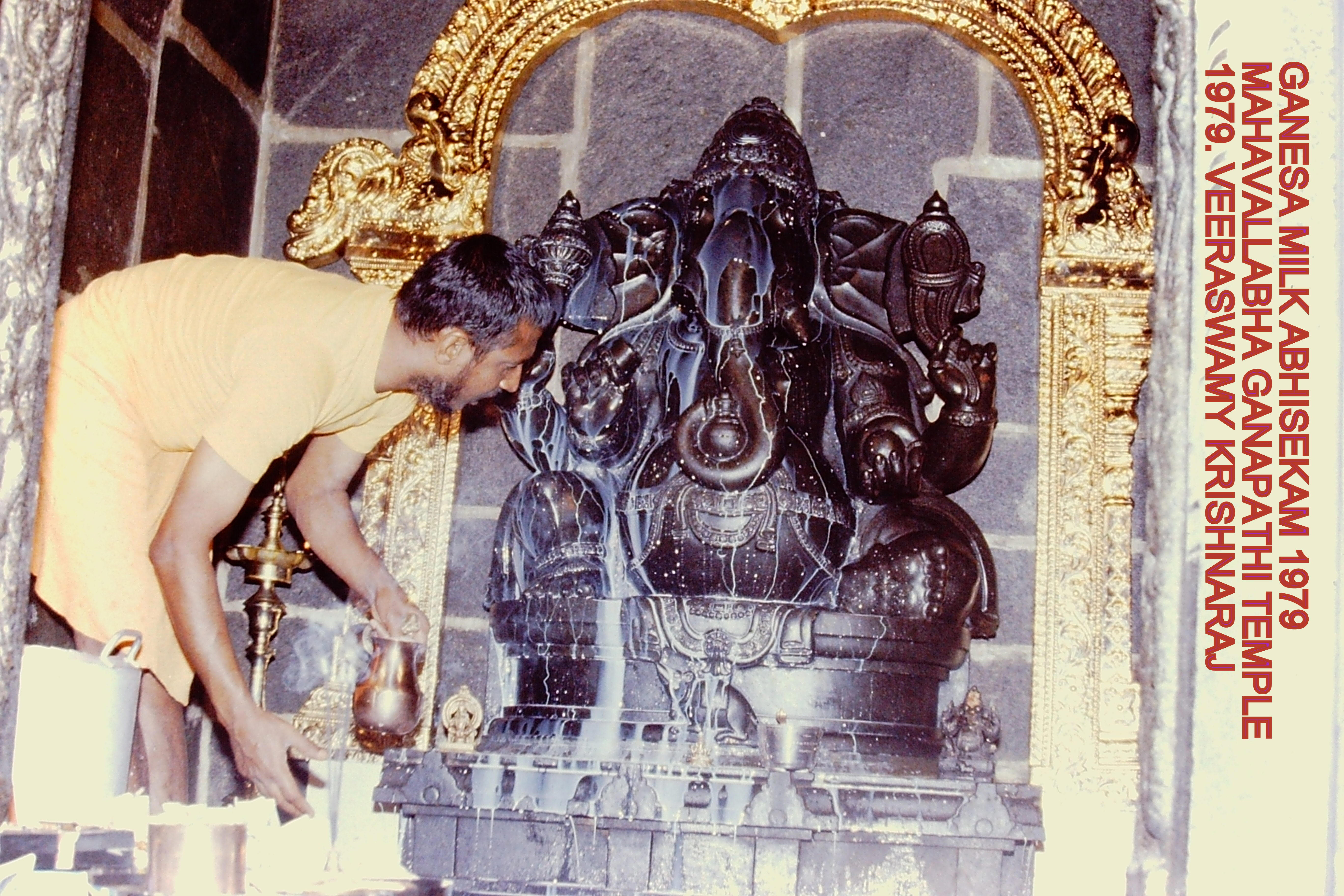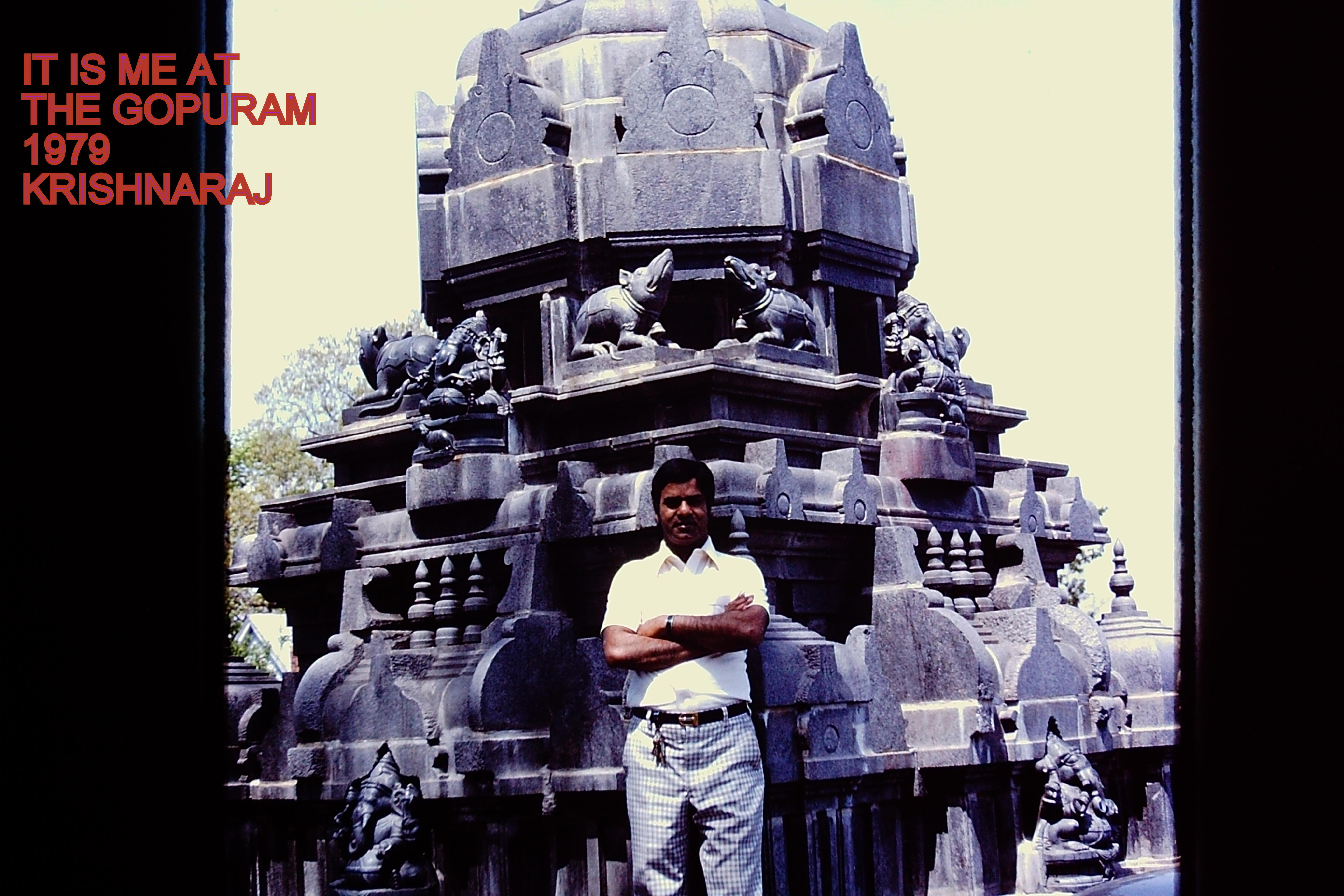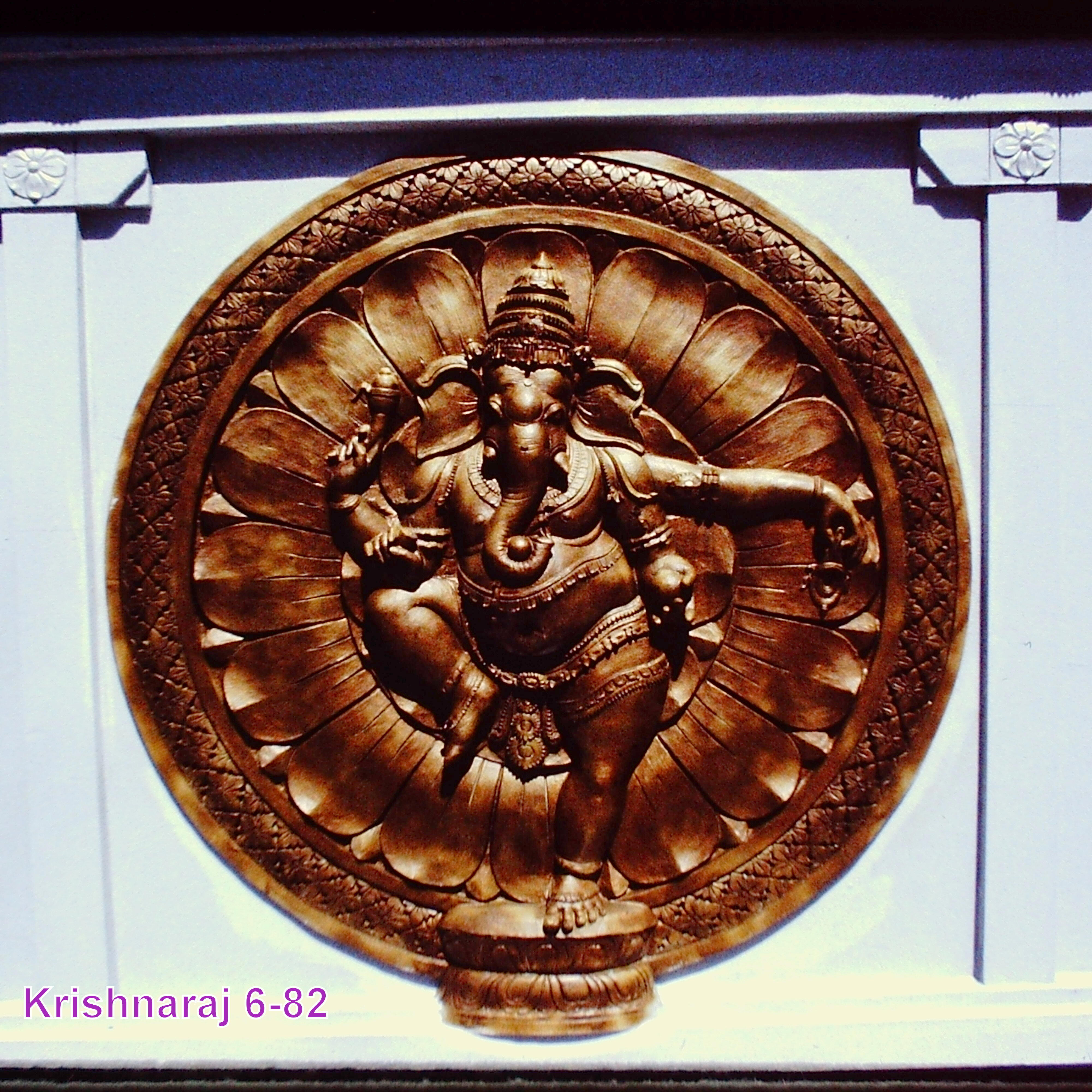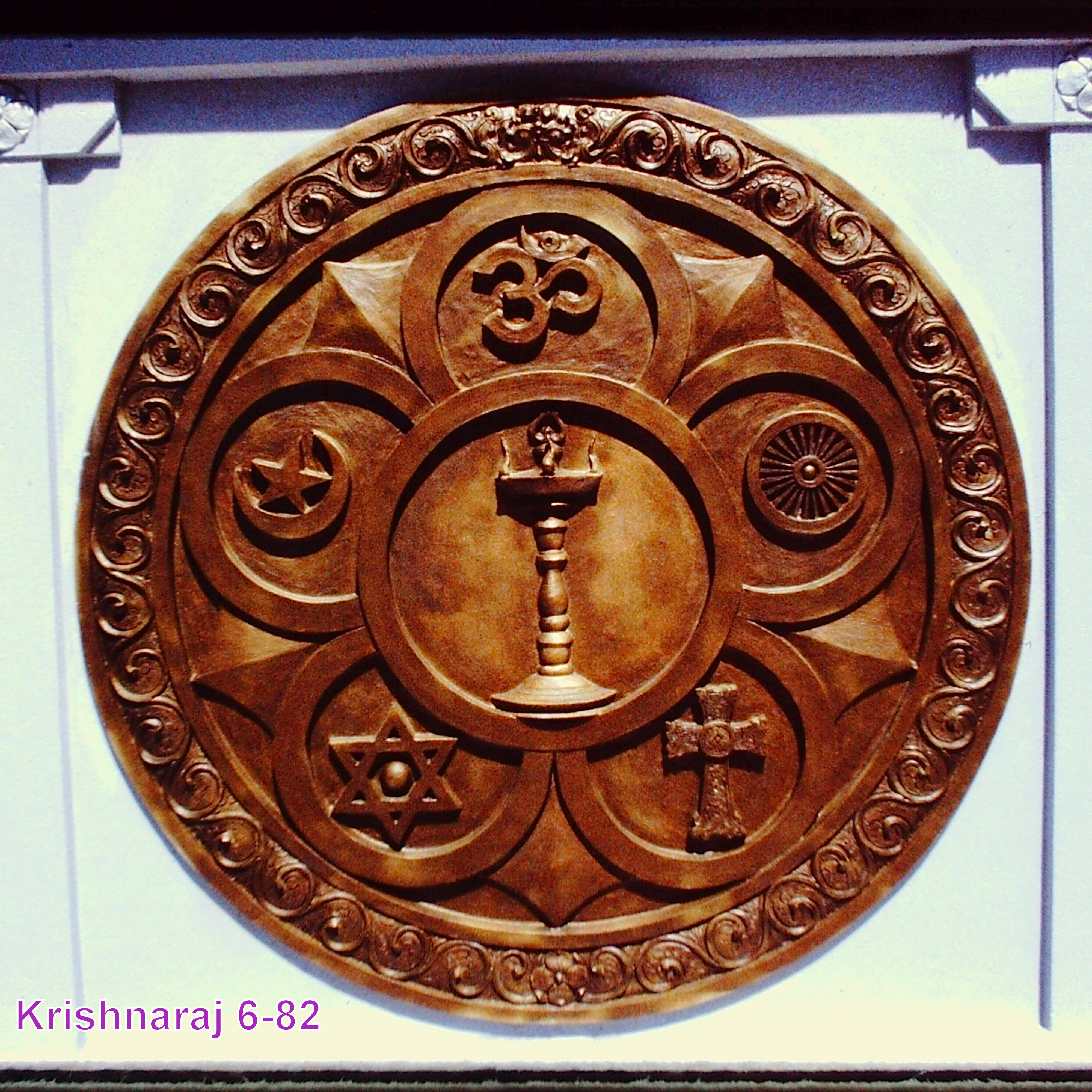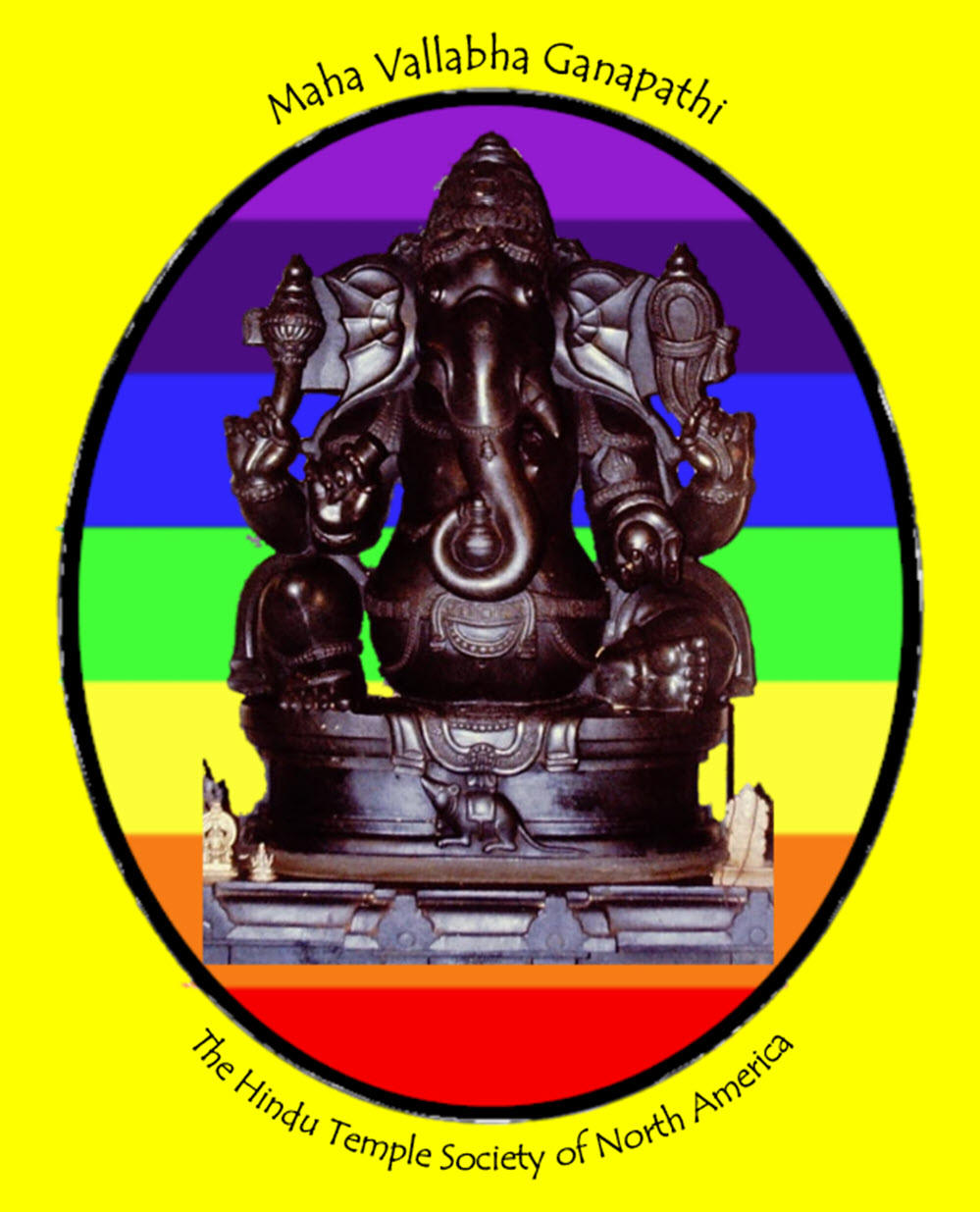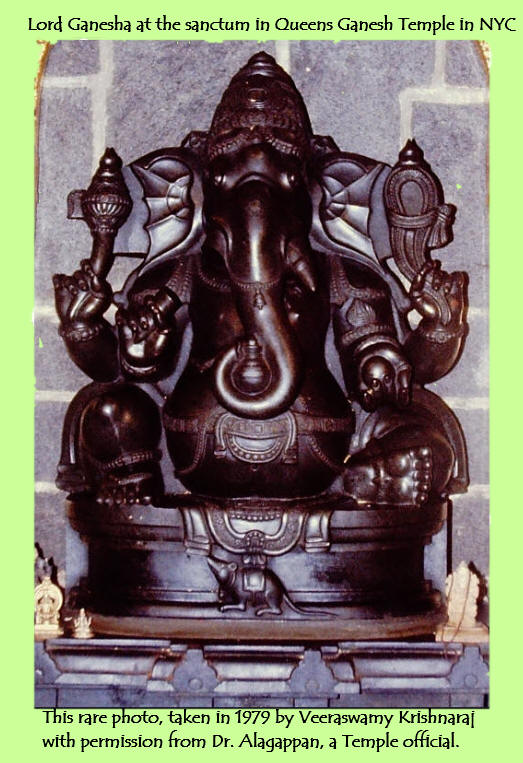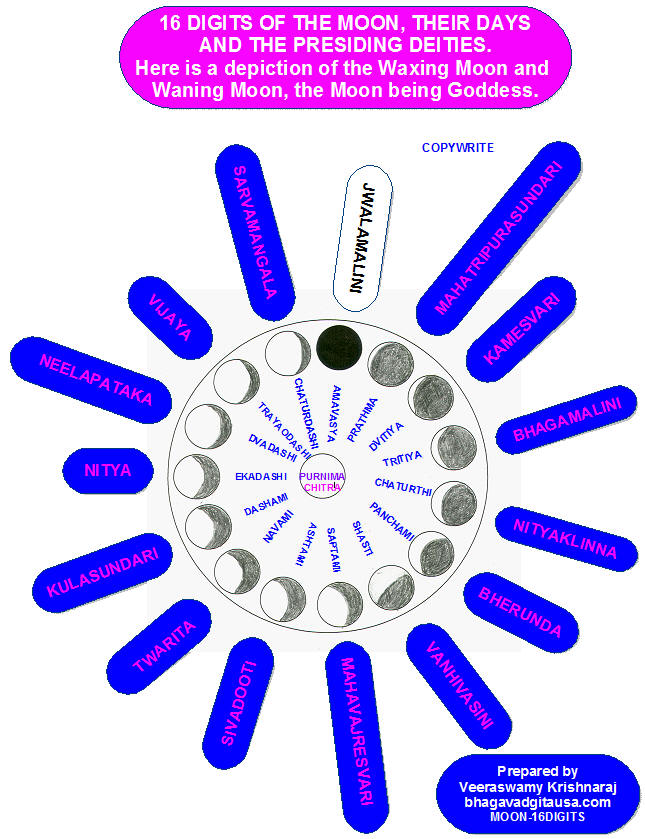Śri Mahā-Vallabha Ganapati Devasthānam

Veeraswamy Krishnaraj
The New York Ganesh Temple has many other names: Queens Temple, Ganesh Temple... The official name is Hindu Temple Society of North America, representing Sri Maha Vallabha Ganapati Devasthanam.
It was a run-down church to begin with. Yes, I was one among the first devotees to worship Ganesa in a church building on the Bowne Street. Yes, I am that old, 80 on February 27, 2017.
The Temple gives spiritual solace to the yearning
soul and the adjoining Canteen gives physical and life sustenance.
The origin of the Word "Gaṇesa"
Gaṇa is commonly translated as attendant. It also stands for class of
animate and inanimate entities, flock, multitude, number, series, tribe,
troop.... Ganesa is the superintendent of Siva's troops. He is the
leader of Gaṇas (Ganapati = Gaṇa +Pati).
Ganesa is the first son of Siva and Parvati. Since Ganesa is the remover of obstacles, he is worshipped at the beginning of any
undertaking or any composition. His invocatory Mantra is OM Sri Gaṇeśāya
Namaḥ among others.
Vighneswara is the Lord of obstacles. (Vighna +
Īswara = obstacles +
Lord) and so obstructs our chosen path if our timing is wrong. In his
capacity as Vinayaka (
Ekadanta = the one-tusked; Danta is tooth or tusk. Danta is cognate with dental. Gajamukha/Gajanana =
the elephant face; Pilliayar = (honorific) son, Ganesa. Lambodara = the
pot-bellied.
Ganesa and the West
Ganesa intrigues the West.. They don't know what to make of the Hindu
God. Ganesa, according to the students from West, was not
present in the Hindu scene prior to the fifth century. He did not figure
in Mahabharata, though Hindus are of the belief that Ganesa was the
scribe of Mahabharata when Vyasa narrated and dictated the Great Story.
Because of his theri-anthropomorphic appearance, the western students
are of the opinion that Ganesa was the god of elephant cult. Ganesa
might have been the successor to the evil spirits, Vinayakas. One thinks
that Ganesa is the Sun-God of the Dravidians and his Vahana (vehicle)
the rat stands for darkness, which the sun dissipates. They quote
Koomaraswamy saying that Ganesa is the godling related to Yaksas and
Nagas. Monier williams says Ganesa and his brother Skanda are the head
of tutelary village divinities, offering protection against evil. They
attribute the rise of Ganesa to the aggressive
promotion by his followers and worshippers. Others point to the mention
of Ganesa in Vedas, as the one with elephant face and one tusk.
Speculations abound as follows. Siva defeated Ganesa the
non-Brahmanical, Non-Vedic godling and later conferred Ganesa the honor
of the leader of Siva's attendants. Parallels are drawn to show the
simultaneous acceptance of Ganesa in the Brahmanical fold and the
assimilation of the tribals in South India into the Varnasrama dharma of
Brahmanical Vedic practitioners after the Buddhist and Jain decline.
Ganesa made of scruff
Ganesa, a case of Xenograft
Transpantation
One legend says that scruff (dross) from the nape of Parvati's neck was
the origin of Ganesa. Parvati was alone in her abode, when Siva went to
Kailās (abode of snow--Himalayas) which is a mountain in the Himalayan
range; Kubera and Siva live in the loftiest peaks north of Manasa Lake.
When Siva came back, he tried to force his way past anthropomorphic
Ganesa, who would not allow that because his mother was in the bath and
he did not know who Siva was. Siva ordered one of his Ganas to cut his
head off. Parvati was angry and grief-stricken. Vishnu went searching
for a replacement head and found a young elephant, whose head was
transplanted on Ganesa's body. Another legend says that Sani looked at
Ganesa and his evil eyes beheaded his head and Vishnu replaced it with
the elephant's head.
A question may be raised: If xenograft was possible then, why did Vishnu
not put Ganesa's own severed head back in its place? It is possible that
the injured head was too damaged for repair. I guarantee that my
statement constitutes no disrespect; Hindu gods invite queries like this
from devotees. But that Ganesa having an elephant head needs an
explanation more so than why his own severed head was not put back in
its place. We do not know the motive behind the xenograft, while Vishnu
had the technical ability to transplant and we must find an explanation
on why he has the elephant head. One time Parvati took a bath and the
bath water was thrown into Ganges River. Elephant-headed goddess Malini
drank that water and bore a five-elephant-headed boy with four arms.
Parvati claimed him as her own. Siva reduced the five heads to one and
blessed him as Vighnesvara- 'the Remover of Obstacles.' Why broken tusk?
Parvati's bath water with her dead skin was dumped in the Ganges River.
Parvati's dead skin had XX chromosome. Since Malini (XX) drank the water
containing XX, the resulting baby should be another XX, and not XY, that
Ganesa was. It is known scientifically X chromose came first into
existence millions of years ago, the other X chromosome mutated to
become the Y characteristic of male. It is a scientific fact girls came
first before boys. How did drinking bath water make Malini become
pregnant with male elephant heads and man's body? Malini is
elephant-headed goddess and Parvati is anthropomorphic like us.
All these have a story and a moral to teach us. In Hinduism exegesis
(unlike in other religions) is allowed and encouraged.
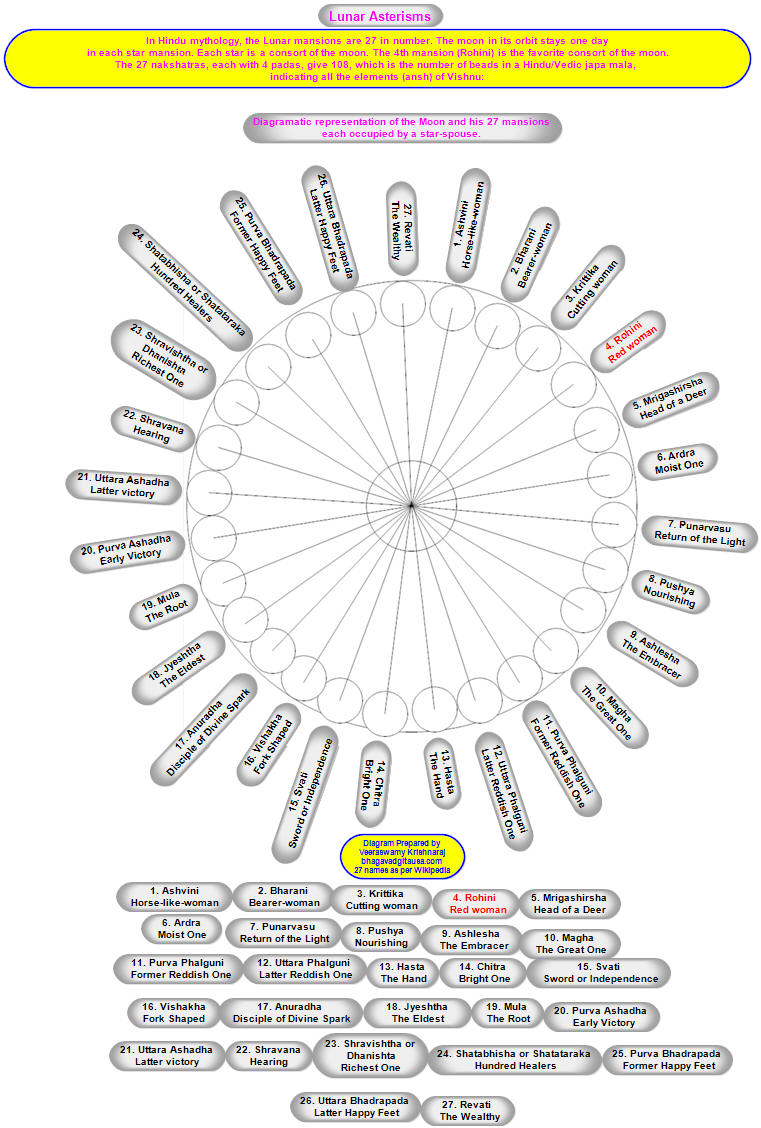
Liñga Purana and Vinayaka's birth,
Chapter105
The origin of Vighnesvara and Vinayaka (the dispenser and remover of
obstacles)
The Devas came to Siva who greeted them with his blessings. The Lord of
word and speech addressed Siva saying that the Asuras were causing harm
to the Suras (gods) and begged that Siva should throw impediments on the
evil ways of Asuras (demons). The trident-bearing Lord of Devas, Siva
entered the womb of Uma, the Universal Mother, and emerged as Ganesvara.
(The concept of God entering the womb of his spouse without insemination
and emerging as a divine being and making his wife his own mother is
special in Hindu religion.) Ganesvara is the Master of Gaṇas. All Devas and Gaṇas eulogized Siva-Maheśvara, the source of the
universe and the glorious remover of miseries of human and worldly
existence. Ambika-Uma received with gladness her elephant-faced Lord
Gajānana (Gajanana), the creator of the world and the wielder of the
trident and noose. Devas and others eulogized and bowed to Mahesa and
Ganesa.
Ganesa the elephant-faced God dances and offers homage to his father and
mother. Mahadeva-Siva picks up his son, kisses him on his forehead and
says that he took his birth to destroy the Daityas (demons, the sons of
Diti) and bring
joy to Adityas (gods, sons of Aditi) and Brahmins, the Vedic scholars. Ganesa is
endowed with special powers: throwing obstacles to sacrifice by the
Daityas; removal of vital breaths from those who are negligent in
performing rites, and teaching and study of Vedas; removal of vital
breaths from those who do not perform the duties of their castes;
treating the worshippers as equal to him; protecting the old, the
infirm, the young, and the devotees. Siva says that worship of Siva,
Vishnu, or Brahma would commence with the worship of Ganesa. All
auspicious rites and rituals would be ineffective unless Ganesa is
worshipped first. Siva continues to eulogize Ganesa. "Ganesa is worthy
of worship by Brahmins, Kṣatriyas, Vaisyas, and Sudras with the offering
of victuals for realizing their siddhis. Devas (Suras, Adityas, gods)
and others would accomplish nothing if they do not offer flowers,
fragrance and incense to Ganesa. Brahma, Vishnu, Siva (includes himself)
are no exception and if they do not worship you first, you will throw
impediments in their path. Ganesa creates impediments in the rites and
rituals of Daityas (Demons, Asuras)."
A
Aditi (Sanskrit) Aditi [from a not + diti bound from the verbal root da to bind] Unbounded, free; as a noun, infinite and shoreless expanse. In the Vedas, Aditi is devamatri (mother of the gods) as from and in her cosmic matrix all the heavenly bodies were born. As the celestial virgin and mother of every existing form and being, the synthesis of all things, she is highest akasa. Aditi is identified in the Rig-Veda with Vach (mystic speech) and also with the mulaprakriti of the Vedanta. As the womb of space, she is a feminized form of Brahma. Now you know India recognized transgenders a long time ago. The line in the Rig-Veda: “Daksha sprang from Aditi and Aditi from Daksha” has reference to “the eternal cyclic re-birth of the same divine Essence” (SD 2:247n). In one of its most mystic aspects Aditi is divine wisdom.
Aditi has correspondences in many ancient religions: the highest Sephirah in the Zohar; the Gnostic Sophia-Achamoth; Rhea, mother of the Greek Olympians; Bythos or the great Deep; Amba; Surarani; Chaos; Waters of Space; Primordial Light; and the source of the Egyptian seven heavens. Sometimes she is linked with the Greek Gaia, goddess of earth, to denote dual nature or the mother of both the spiritual and physical: Aditi, cosmic expanse or space being the mother of all things; and Gaia, mother of earth and, on the larger scale, of all objective nature (cf SD 2:65, 269).
ww.theosociety.org/
Ganesa dispenses and removes obstacles. Man is essentially a polar
animal, two poles being virtue and evil, and in-betweens. He is man and
angel on the virtuous side, animal on the other end, and many times
somewhere in-between. Virtue and vice are Adityas (gods) and Daityas
(demons). Man is a hybrid, part god and part demon and a combination
and a permutation thereof. Asuric (demonic) nature and pursuit someday
will face obstacle while the reverse is true for the Suric.
The large elephantine head of Ganesa is symbolic of immense intellect to
understand Vedanta. Large ears represent constant listening and hearing
of Vedanta from the teachers. The trunk represents versatility; it can
lift heavy objects, pluck one blade of grass or pick a penny. The tusks
stand for the discriminative power of Ganesa, while choosing from the
dualities of opposites, right and wrong, love and hate.... Parasurama's
axe thrown in anger was adroitly stopped by one of the tusks; the broken
tusk is symbolic of transcending dualities. Another source tells that
the intact tusk represents the maleness of Siva and the broken tusk the
femaleness of Sakti. His humongous mouth, stomach and appetite stand for
whopping love of life. A humorous story goes with his large appetite, by
which Ganesa humiliated Kubera's vanity. Exoticindia.com
Coconuts are broken
before offerings and at festivals. When a devotee enters the temple, he
must leave the ego and all conflicts at the temple flagpole. You cannot
take your ego to the sanctum and clash with the EGO of all egos, the
deity. He is MAXI and I am mini-me; so are you individually. There is only
One "I" in this
universe. There is no place in the temple for such things as I-Me-Mine.
There is no place for solipsism (egoistic
self-absorption).
There is only one Aham (=
அகம்/அஹம் =
Egotism): That is Siva.
He is the First One to say "Aham (I am)." After that He looked out and
Idam came into existnce. Aham = This; Idam = That (all objects).
Ahaṁkāra is the I-Doing, the haughtiness that “I am the Doer.” When two
Egos collide, there is conflict. Don't take on the EGO of the Universal
Soul.
You can't win. It is better to merge into it. You become a part of the
Universal Soul. That is big. Breaking coconut is euphemism to breaking your ego before
god. Once broken, the two
halves should not be put back together. That indicates you are trying to
patch up the broken ego. Once broken, it stays broken forever.
You tell EGO, "Here Ye Go, Ego."
The Temple canteen feeds 4000 people a week, and more than double during Dīvālī season. It is a cornucopia of guilt-free south Indian lacto-vegetarian fare the South Indians eat regularly. The North Indians go gaga over the fare such as Dosa, Idly...
The Divine Mandate to build a temple.
Alagappa Alagappan
(AA)
had a dream, wherein a god told him to see a medium. The medium told him
that Lord Ganesa wanted a temple for him in the city starting with the
letter N. The medium further advised AA to establish Hindu temples all
over North America.
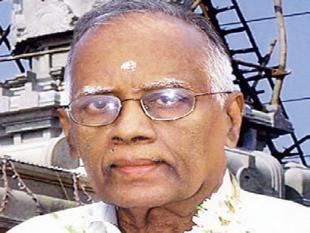
In 1970 (January 26, 1970, India's Republic Day),
AA founded the Hindu
Temple Society of North America (HTSNA).
In 1657, the signers of Flushing Remonstrance
protested against persecution of Quakers by the powerful Dutch Colonial
authorities.
A farmer by name
John Bowne allowed
the Quakers to assemble in his house. That street is Bowne Street in
Flushing Queens, where the temple is located. Mr. John
Bowne a Quaker was arrested for Remonstrance and deported to Holland.
Freedom of worship by Quakers was allowed later by the Dutch West
India Company.
HTSNA
bought the Russian Orthodox church building in 1972. I visited the
church many times which housed the images of Hindu gods. Consecration took place on fourth of July 1977.
The original temple, consecrated in 1977, had the
central deity Ganesa and four deities in the four corners of a
rectangle: Vishnu, Sri, Siva-Liñga and Murugan.
